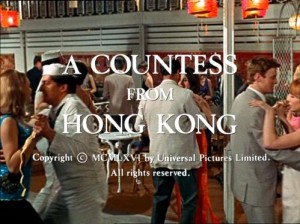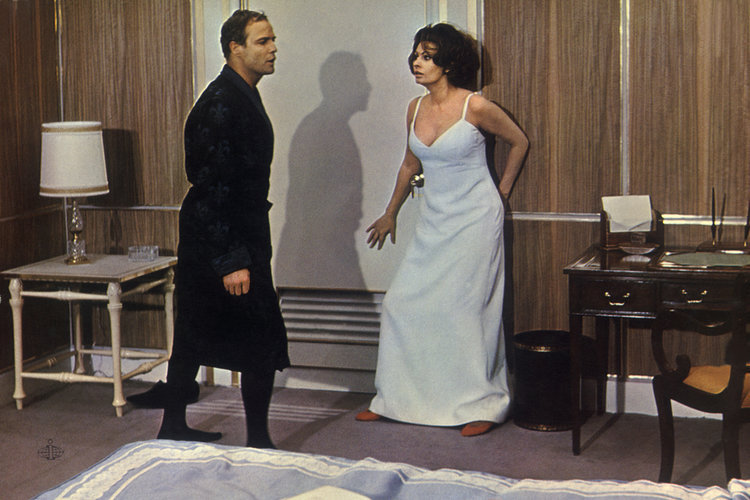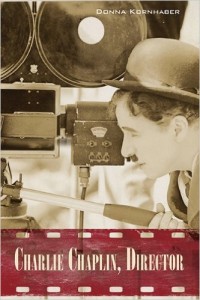One of my reasons for recently revisiting Chaplin’s last feature, while preparing to teach a ten-hour course about him in Brazil, was trying to figure out why it’s so bad. There are other examples one could cite of unredeemably bad films by great filmmakers, but this one seems to belong in a category all its own. I certainly wouldn’t confuse it with his previous three features, some or all of which are considered bad by many of my colleagues but all of which I consider great in different ways (and to different degrees), even when they’re at their most distasteful. A Countess from Hong Kong is never distasteful in the various ways that A King in New York, Limelight, and Monsieur Verdoux can be at times, but it also never comes close to being revelatory in any profound way, as they continue to be.
Here is one possible explanation: Chaplin’s greatness as a director doesn’t invariably depend on his presence as the central star attraction, as A Woman of Paris amply demonstrated. But a major part of his greatness is still tied to a kind of dialogue he (mainly) had or (less often) attempted to have with his public throughout his career, most of which was tied in one fashion or another to his physical presence and/or his personal autobiography. And the autobiographical resonances of Countess, while certainly present — such as his mother’s experiences as a prostitute with vast social-climbing ambitions and/or fantasies, his father’s frequent drunkenness, and his own social standing in the latter part of his career as a kind of statesman (which A King in New York also alludes to, even more directly) — are emotionally superficial compared with those of his other films.
More importantly, the kind of ongoing dialogue that Chaplin had with his public, which veered closer and closer to monologue in Monsieur Verdoux, Limelight, and A King in New York as he gradually lost his audience, ceased to be any form of dialogue afterwards. Countess is a light comedy that depends on some contact and complicity (that is to say, dialogue) with the audience of 1967 in order to function; unlike the preceding features, it doesn’t accept the terms of a monologue, even by default. So at most one can smile or laugh at some of the slapstick, but not with any of the investments that one had towards any of the characters in the earlier films. Brando’s acute discomfort in his part — which Chaplin described as his lack of a sense of humor, which he said was an intentional reason for casting him, perhaps attempting to rationalize the stiff results (which overlooks the comic flair and grace Brando could show in, say, Guys and Dolls) — tends to discourage this, and Loren’s more comfortable assumption of her own role as the Tramp never attains the pathos that would have given her character some resonance. All that remains, alas, is a kind of shadow play performed for Calvero’s absent audience. [7/27/12]
Postscript (March 2016): Donna Kornhaber’s fascinating recent book Charlie Chaplin, Director (2014), published two years after the above was written, offers a lengthy defense of The Countess from Hong Kong, which the author even prefers to his other late features, finding it closer to the wellsprings of Chaplin’s talent as a director. I obviously don’t (and can’t) agree with this judgment, but her arguments are well worth attending to. [3/23/16]





